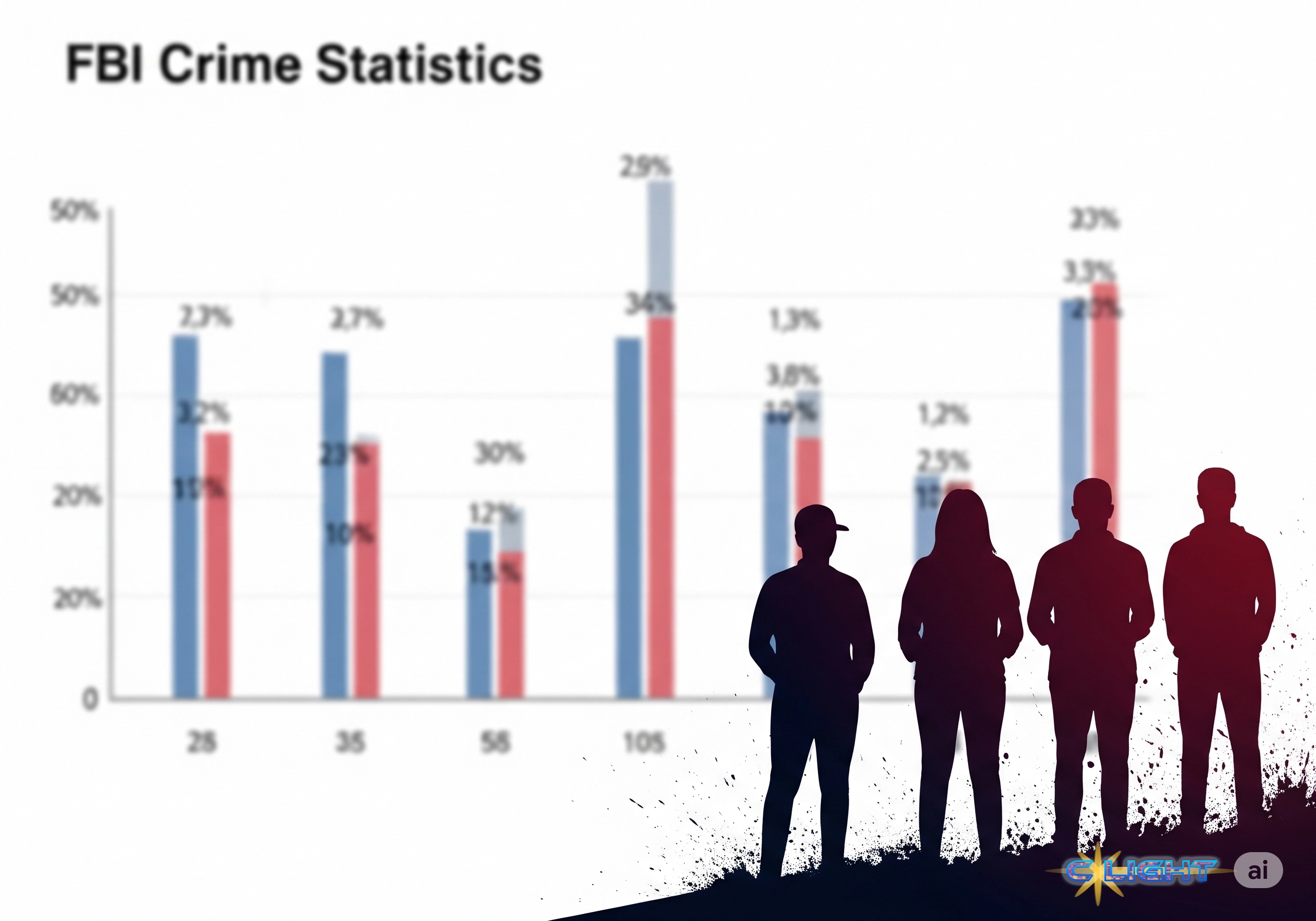The headlines that will circulate from the FBI’s latest annual crime report are, on the surface, a welcome balm for a nation weary of bad news. Violent crime is down. Murders have fallen by a remarkable 15 percent. But to celebrate this as a simple victory is to willfully ignore the far more sinister and revealing truth lurking just beneath the surface of the data. The real story in the 2024 FBI report is not about the violence that is subsiding, but about the hate that is festering. America is in the grip of a near-record-setting crisis of targeted, ideological hate, and the very system for measuring this sickness is not just broken, but is under deliberate political attack.
Part I: The Face of the Hate
While general violence may be on the wane, the data shows that violence directed at specific communities remains at a terrifyingly high level. In 2024, law enforcement agencies reported 11,679 hate crime incidents to the FBI. While this represents a tiny 1.5% dip from the all-time high in 2023, it is still the second-highest number of hate crimes reported in over 30 years. This is not a sign of progress; it is a sign of a deeply entrenched and persistent social pathology.
A granular look at the data reveals the specific targets of this epidemic. More than half of all incidents were motivated by race or ethnicity, with Black Americans remaining, by a wide margin, the single most targeted group. They are followed by Jewish Americans and gay men, who are the top targets in the categories of religion and sexual orientation, respectively. This is not random violence; it is a targeted campaign of intimidation and terror against specific communities. As Amy Spitalnick, CEO of the Jewish Council for Public Affairs, stated, “We’re facing a crisis of hate and extremism that threatens all of us and the core of our democracy.”
Part II: The Broken Yardstick
As alarming as the official number of nearly 12,000 hate crimes is, the terrifying reality is that it represents a significant and chronic undercount. The system for collecting this data is, by its own admission, incomplete. The 2024 report is based on data from only 86% of the law enforcement agencies in the FBI’s program.
The true absurdity of this underreporting is revealed in a single, damning statistic highlighted by the Arab American Institute: in 2024, 57 police agencies serving populations of 100,000 or more reported the statistically impossible figure of ZERO hate crimes. This is not a reflection of a sudden outbreak of tolerance in major American jurisdictions; it is a clear reflection of a system that is failing to see or choosing not to report. This failure is compounded by the deep and often justified distrust that many of the most targeted communities have for law enforcement, which leads to a reluctance to report these crimes in the first place. The official number, therefore, should be seen not as an accurate statistic, but as the absolute floor of a much deeper and darker reality.

Part III: The War on Data Itself
This chronic underreporting is no longer just a passive, bureaucratic failure. It is now being actively worsened by a cynical and dangerous political campaign to manipulate and distort the very data we use to measure the problem. This is a war on data itself, being waged on two fronts.
The first is a campaign of politicization. As the Arab American Institute notes, several states have recently adopted the controversial IHRA definition of antisemitism into their hate crime laws. While fighting antisemitism is a moral imperative, critics argue that this specific definition is a political tool designed to “conflate criticism of the foreign state of Israel… with the real problem of antisemitism,” effectively weaponizing the fight against hate to silence political speech.
The second, and more sinister, front is a campaign of erasure. The Felonious Punk administration has reportedly asked federal agencies to consider removing the collection and reporting of sexual orientation and gender identity (SOGI) data from key victimization surveys. This is a direct attempt to make hate crimes against the LGBTQ+ community statistically invisible, a move that would blind us to the scale of the violence being directed at them. This political war on data is the direct result of a political class that fuels the very hatred it refuses to honestly measure. As Maya Berry, Executive Director of the Arab American Institute, stated, “that our elected officials openly and boldly engage in bigoted and hateful rhetoric against specific communities only serves to fuel division and violence against those targeted communities.”

An Unaddressed Epidemic
The United States is facing two intertwined crises. The first is an epidemic of hate-fueled violence that has remained at near-record levels, a clear sign of a sickness in the nation’s social fabric. The second is a political movement that is actively trying to break the yardstick we use to measure that sickness, either by manipulating the definitions or by erasing the victims from the data altogether.
There are small signs of hope, such as the bipartisan Improving Reporting to Prevent Hate Act, which aims to make the data collection more inclusive. But this is a small bandage on a gaping wound. Without a wholesale rejection of the hateful political rhetoric that fuels this violence, and a serious, depoliticized commitment to honestly and accurately counting every victim, this crisis of hate will continue, by design, to be what it has been for far too long: a national epidemic, unaddressed.
Discover more from Clight Morning Analysis
Subscribe to get the latest posts sent to your email.










